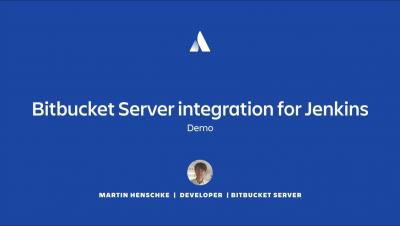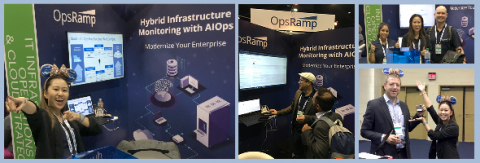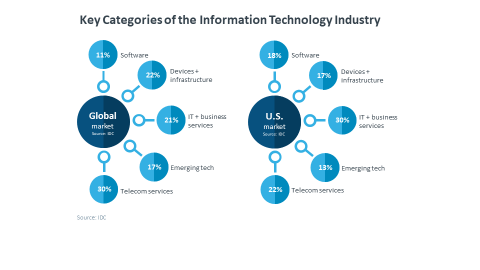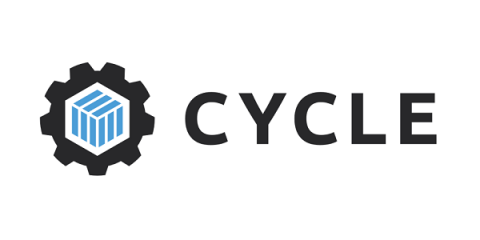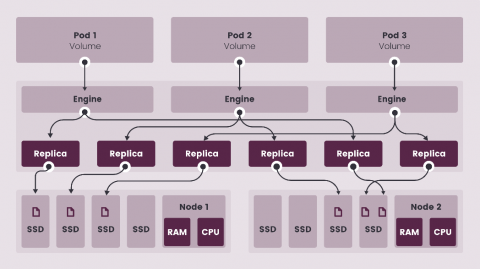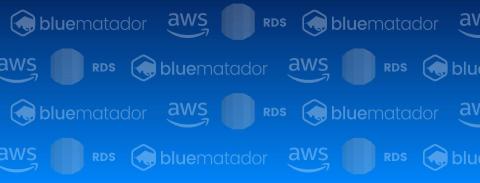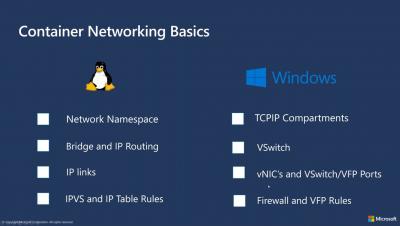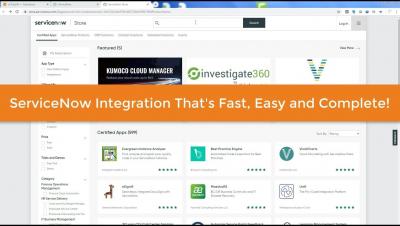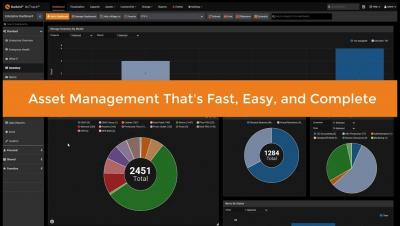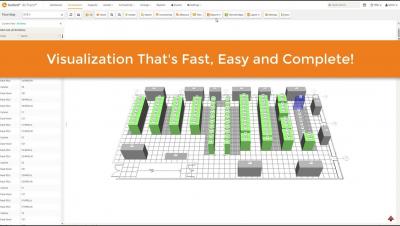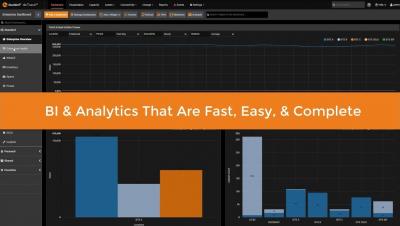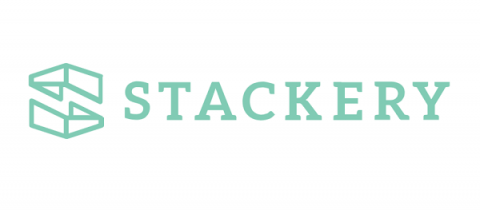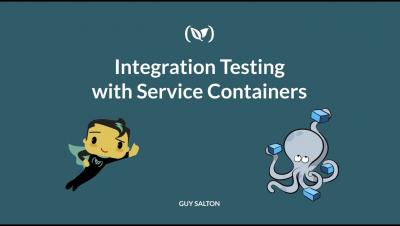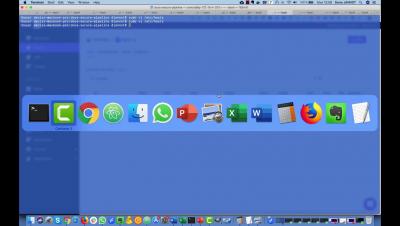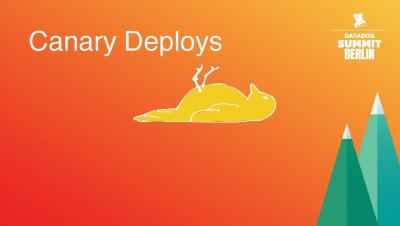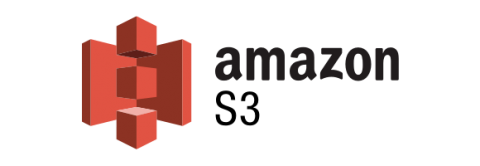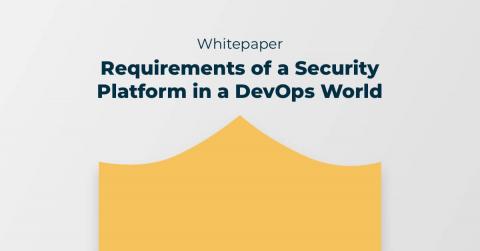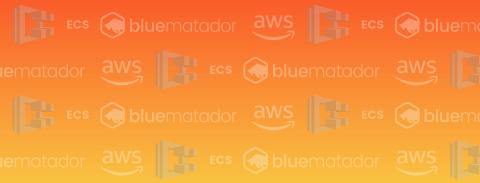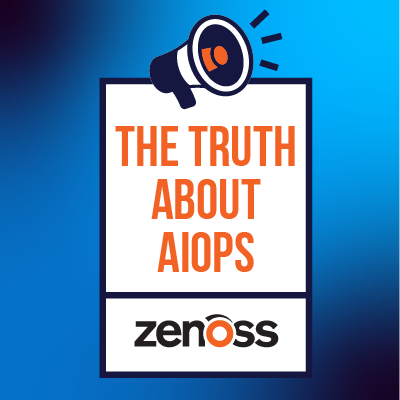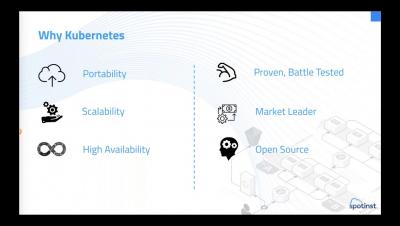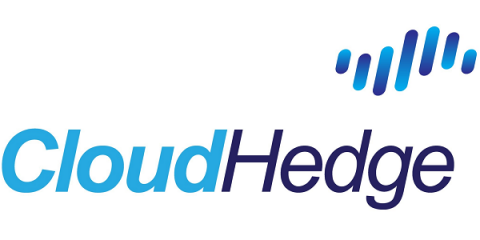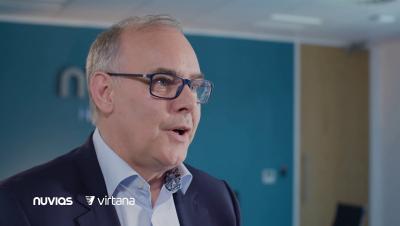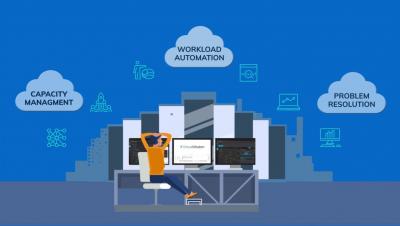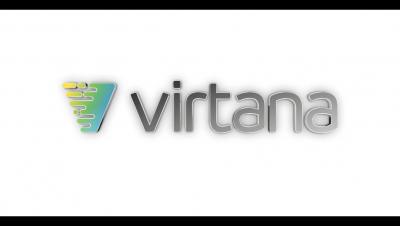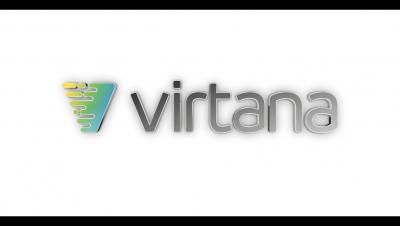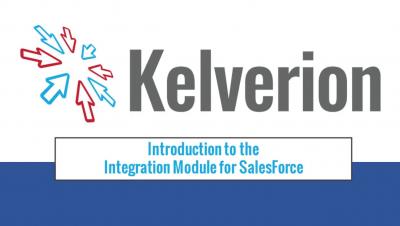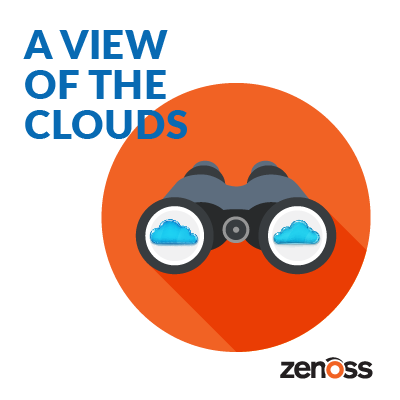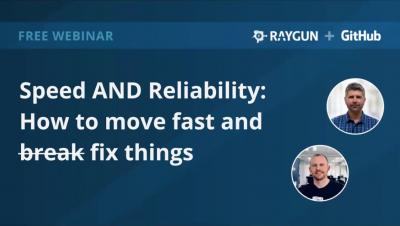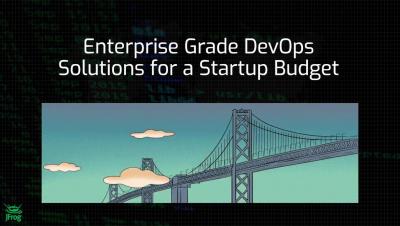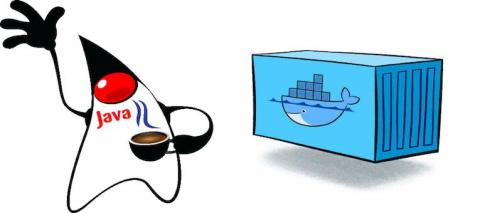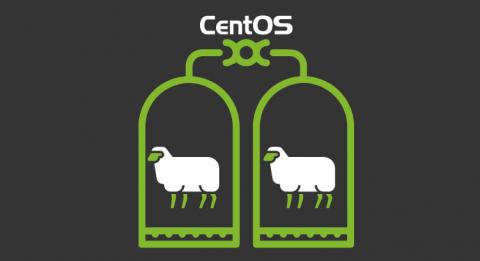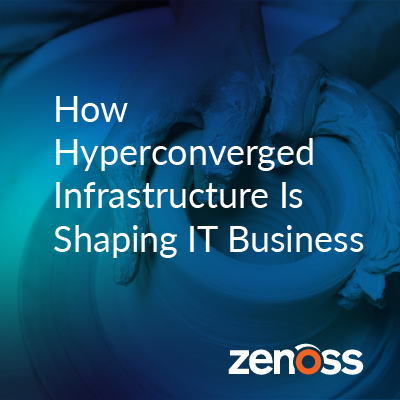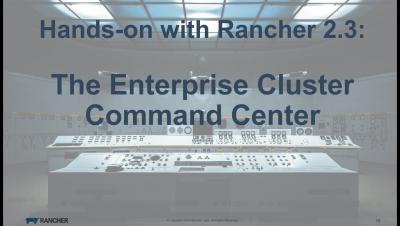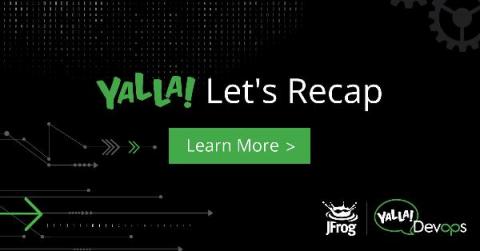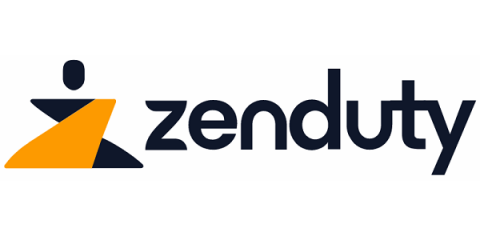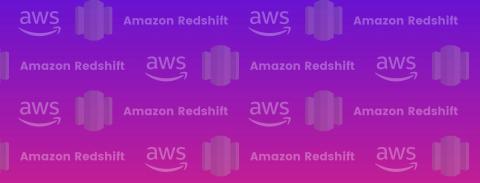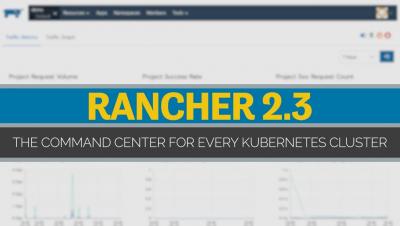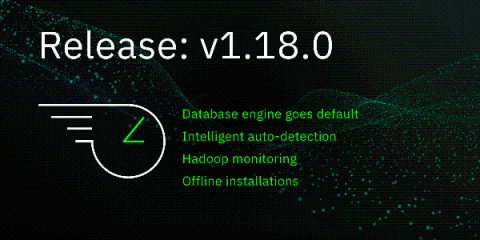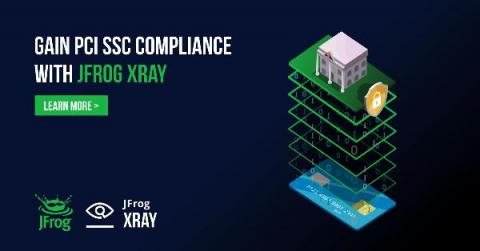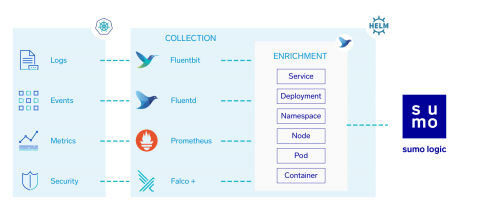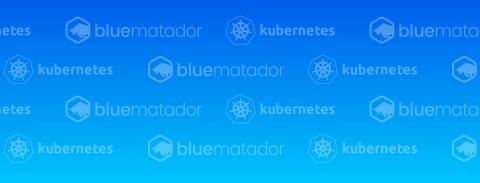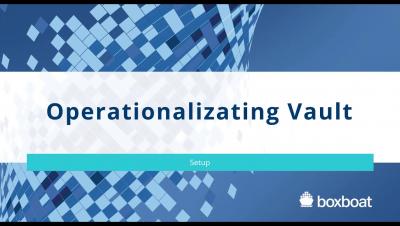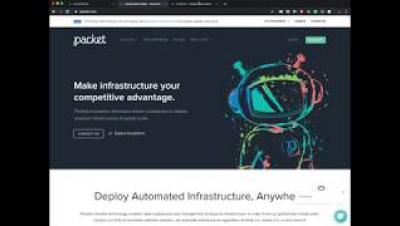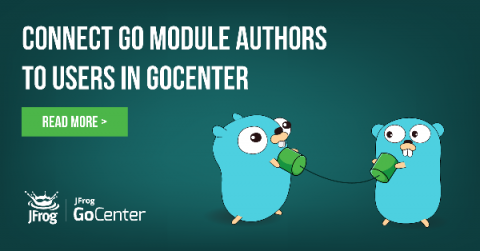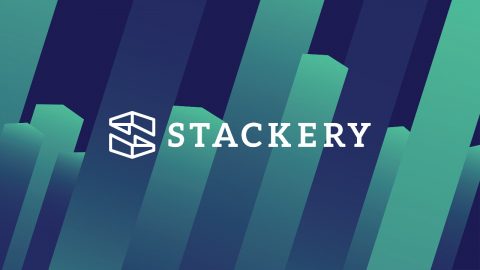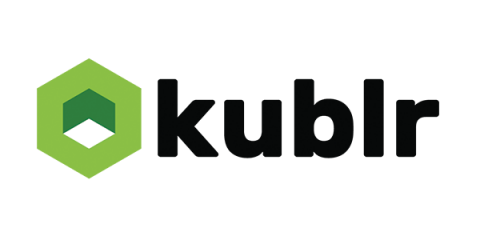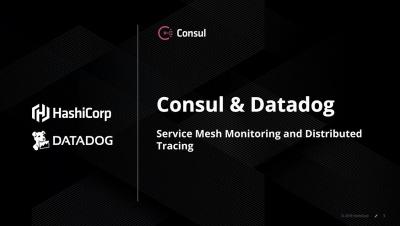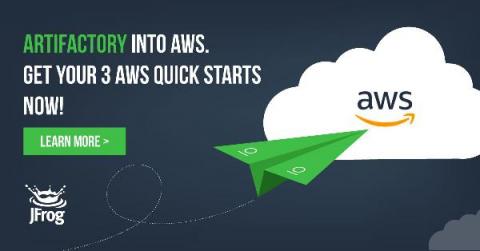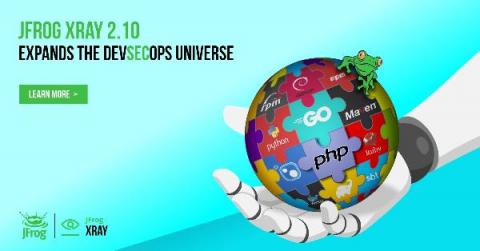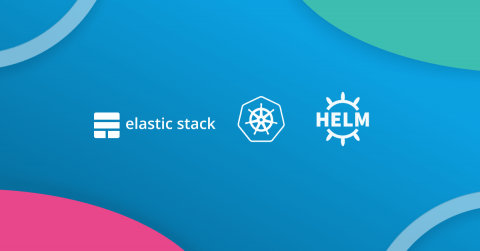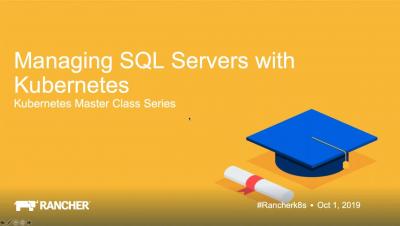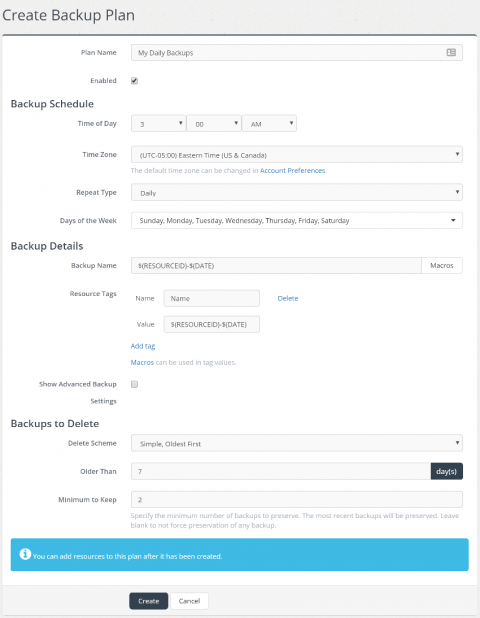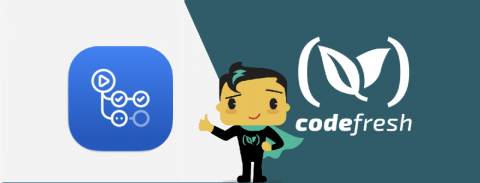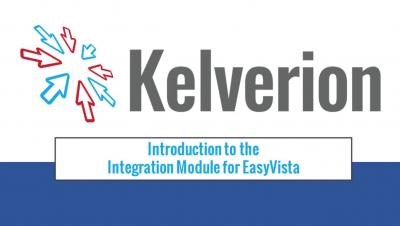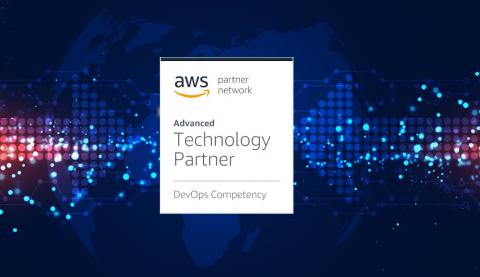Operations | Monitoring | ITSM | DevOps | Cloud
October 2019
Run your tests in parallel with Codefresh and Knapsack Pro
One of the most well-known problems when it comes to testing applications is the amount of time required by all test suites. Integration tests, in particular, are usually very slow to execute and depending on the type of application, several minutes (or even hours in extreme cases) are needed in order to get the final execution result. You can reduce the test execution time with several techniques, but one of the most effective methods is running your tests in parallel.
Gartner Symposium 2019 Top Trends Impacting IT Infrastructure and Operations Management
OpsRamp was a sponsor of Gartner Symposium in Orlando last week, where CIOs and top executives gathered to share knowledge on the changing role of IT operations, DevOps adoption, and anything to do with cloud migration, monitoring, and management. Gartner analysts and researchers presented on several trends in the world of IT operations, and 10 of them offered key insights into the direction of our industry:
Kubernetes Adoption Hastens in EMEA
Containers - and Kubernetes - are now a key part of enterprise growth strategy across EMEA. We can see this not only as usage of Rancher grows, but also as the popularity of our local Lighthouse Events increases. In Northern EMEA particularly, the appetite for Kubernetes is accelerating rapidly. How are companies in this region capitalising on Kubernetes?
5 Strategies to Improve the Effectiveness of Your IT Management
IT is pervasive in today’s setting. Businesses, governments, and individuals use IT products constantly for different purposes. In fact, it is forecast that the global spend would reach $5 trillion by the end of 2019. Most of the money streaming into the IT industry comes for corporations and government agencies. Households are also contributing to it, including home-based commercial ventures.
How To Deploy WordPress as a Headless CMS on Cycle
With the release of the WordPress REST API (version 4.7 circa 2016), WordPress developers started deploying the application as a headless CMS. As the WordPress community started to embrace this architecture, more and more developers are starting to use it in production. Now thanks to the growing number of plugins, WordPress as a headless CMS is starting to become the go-to deployment strategy.
Longhorn Accepted into CNCF
Today I am very excited to announce that Rancher Labs’ Project Longhorn has been accepted by the Cloud Native Computing Foundation as a sandbox project. Many Kubernetes users still find it challenging to run stateful workloads and manage persistent storage. Longhorn aims to help you manage stateful workloads in Kubernetes by providing a solution for persistent storage that you can easily deploy, use, and manage.
Monitoring Amazon RDS with Blue Matador
Amazon RDS allows you to easily run databases in AWS without actually having to manage database servers. Since your databases are critical to the health of your application, properly monitoring RDS is a top priority for most teams. In this blog post, we will go over how Blue Matador monitors RDS automatically and without configuration.
Kubernetes Master Class Windows Container Networking in Rancher 2 3
dcTrack 7.0 ServiceNow Integration
dcTrack 7.0 Asset Management
dcTrack Visualization
dcTrack 7 BI and Analytics
15 hours writing CloudFormation reduced to 15 minutes with Stackery
ServerlessConf NY this past October was an important milestone for those of us tracking how software is built on cloud services. . We’ve seen the serverless talks evolve from “what is serverless” to “I built a weird thing” to “We built a new business” to “We refactored a legacy app and kickstarted our feature velocity.” We’ll come back to those last two soon, , but I want to highlight some points from one in particular by Tim Wagner.
Circonus Launches the First Machine Data Intelligence Platform Built to Unlock the Enormous Potential of Infrastructure and IoT Data
Today, we’re proud to announce the launch and availability of our Circonus Platform, the first machine data intelligence platform built to provide enterprises with the ability to handle the rapidly increasing data volume and frequency seen in today’s global IT infrastructure and IoT deployments.
The Hidden Costs of Big Data on AWS
IDC predicts a ten-fold increase in data by 2025, which should surprise just about no one. We are all producing more and more data every day—more data than ever before, with no slowdown in sight. Recently we joined forces with our friends over at CHAOSSEARCH to deliver a webinar on the topic of Big Data Done Right—How to Spend Less While You Store & Analyze More. In this webcast, we discussed some best practices around big data storage, transfer, and access.
How to monitor Kubernetes + Docker with Datadog
Since Kubernetes was open sourced by Google in 2014, it has steadily grown in popularity to become nearly synonymous with Docker orchestration. Kubernetes is being widely adopted by forward-thinking organizations such as Box and GitHub for a number of reasons: its active community, rapid development, and of course its ability to schedule, automate, and manage distributed applications on dynamic container infrastructure.
Integration Testing with Service Containers Webinar
DC/OS 2.0: A Multi-Tenant Platform for Strong Day 2 Operations of Cloud Native Services
Could You Be the DevOps Evangelist We're Looking For?
Have you ever been in charge of your company’s observability stack? Does the pain of implementing, configuring, scaling, and maintaining (oh, and correlating the data between) various monitoring, troubleshooting, and security tools resonate with you? If so, you might be our next tech evangelist – our next DevOps Evangelist!
AIOps: The New Fix for Tool Bloat
First Impressions of 'Managed K3s'
The k3s project was started by Darren Shepherd, Chief Architect at Rancher 7 months ago and has already become one of the most popular Kubernetes options on the CNCF Landscape by number of GitHub stars. To put this into context, k3s is more popular than OpenShift by IBM/Red Hat and only Rancher Kubernetes itself is more popular than k3s. Now stars are indicative of interest and popularity only and that should be noted.
What is DevOps?
Digitalization is sweeping across many industries, creating a huge need for innovation. This innovation forces companies to be more agile and deliver faster. However, increasing the speed of your development team doesn’t happen by magic. It’s a metric that isn’t easy to change. How can you adjust to this fast-paced digitalization? I want to introduce you to DevOps.
Canary Deploys
Corporate Virtana Launch October 21 2019
AIOps Ecosystem Doubles, Further Enhancing Enterprise Visibility and Automation Capabilities
HashiCorp and ServiceNow among 10 new Integration Partner Program members collaborating with AppDynamics to help customers broaden their reach across the IT landscape.
What is AWS S3
Amazon Simple Storage Service, widely known as Amazon S3, is a highly scalable, fast, and durable solution for object-level storage of any data type. Unlike the operating systems we are all used to, Amazon S3 does not store files in a file system, instead it stores files as objects. Object Storage allows users to upload files, videos, and documents like you were to upload files, videos, and documents to popular cloud storage products like Dropbox and Google Drive.
Requirements of a Security Platform in a DevOps World
Businesses today cannot afford to be hacked. Cyber attacks can result in hefty fines and lawsuits, not to mention the reputational damage that can result in long-term revenue loss. Of course, this has always been true. But what has changed over the past few years is both the sheer volume of attacks and the growing sophistication used in them. As a result, there is a need an updated and upgraded kind of SIEM security platform to face them.
Monitoring Amazon ECS with Blue Matador
Amazon ECS allows you to easily run containers in AWS in units called tasks. Groups of identical tasks are called services, and groups of services running on the same infrastructure are called clusters. Since it is critical to the health of your application, properly monitoring ECS is a top priority for most teams. In this blog post, we will go over how Blue Matador monitors ECS tasks automatically and without configuration.
The Truth About AIOps
Kubernetes Master Class: Kubernetes from Zero to Hero
AWS EKS Windows Container Support Made Generally Available
Plano, Texas, United States – October 22, 2019 – Last week, Amazon Web Services (AWS) announced the general availability of Windows Container Support on AWS Elastic Kubernetes Service, known as EKS. With this update from AWS, CloudHedge’s enterprise clients who want to modernize their Windows applications to the cloud can now seamlessly deploy them on EKS clusters running Windows Containers out of the box.
Automating Container Infrastructure Management with Spotinst & Rancher
Over the last few years, we have seen a significant shift with companies moving away from developing heavy, monolithic applications and instead adopting new approaches like microservices and even serverless applications. These allow companies to work in a faster and more agile way. Speed and agility are important when a task like deploying a new piece of code to production multiple times a day is normal behavior for a modern environment.
Nuvias Raves on Virtana Partnership
CURO Financial Depends on Virtana
Virtana Presents VirtualWisdom
App Dynamics extolls the virtues of end-to-end visibility with Virtana
Virtana Launch: A Celebration
Cloud Performance Monitoring with CloudWisdom
Cloud Cost Optimization with CloudWisdom
Introduction to the Integration Module for SalesForce
Introducing CloudWisdom, A SaaS Platform that Reduces the Cost and Risk of Operating Public Cloud Infrastructure
We are excited to announce CloudWisdom, a SaaS platform that reduces the cost and risk of operating public cloud infrastructure for enterprise businesses. CloudWisdom optimizes public cloud computing and capacity by recommending configurations unique to your application workloads using machine learning algorithms. This enables our customers to avoid performance bottlenecks and financial waste commonly associated with environments hosted in the public cloud.
Virtual Instruments is now Virtana!
I’m excited to announce that today we’re changing our company name to Virtana. Over the past three years, we have been steadily reinventing Virtual Instruments. You will still find the same deep infrastructure expertise, the same commitment to mission critical workloads, but now our portfolio offers a lot more breadth across the data center and into the public cloud.
Virtual Instruments Becomes Virtana; Enabling Customers to Harness Real-Time Infrastructure Analytics to Transform IT Operations
Virtual Instruments today announced that it has become Virtana, a company focused on providing customers with the industry’s most robust AI-powered hybrid IT infrastructure management platforms for mission-critical workloads. Underscoring this commitment to helping enterprises manage their complex multi-cloud environments, today Virtana introduced CloudWisdom, a SaaS-based cloud cost optimization and monitoring platform.
How DevOps Benefits from Application Performance Monitoring (APM)
Competition is a funny thing. To gain or keep an edge against your competitors, you may need to push the envelope to use newer technologies and processes. But done wrong, that very technology or process could lead to your ruin. This is where we are with DevOps. The methodology that became popular in the mid-to-late 2000s is embraced by many companies . Done the right way, it will help your organization challenge its competition to keep up with customer and user demands.
Why You Should Go Serverless for DevOps
Over the last decade, DevOps has become an important part of software engineering culture, influenced by the wide adoption of microservices, containers and cloud computing. A recent step in the evolution of cloud-based and microservice architecture is the serverless computing – a code execution model where the cloud provider takes total responsibility for the operating system and hardware management.
A View of the Clouds
Speed AND Reliability: How to move fast and fix things [full webinar]
Up and Running: Windows Containers With Rancher 2.3 and Terraform
Windows Support went GA for Kubernetes in version 1.14 and represented years of work. This has been the effort of excellent engineers from companies including Microsoft, Pivotal, VMWare, RedHat, and the now-defunct Apprenda, among others. I’ve been a lurker and occasional contributor to the sig-windows community going back to my days with Apprenda, and I’ve continued to follow it in my current role with Rancher Labs.
Enterprise-Grade DevOps Solutions for a Start Up Budget
Helm 3: Navigating to Distant Shores
Crafting the perfect Java Docker build flow
What is the bare minimum you need to build, test and run your Java application in Docker container? The recipe: Create a separate Docker image for each step and optimize the way you are running it. I started working with Java in 1998, and for a long time, it was my main programming language. It was a long love–hate relationship. During my work career, I wrote a lot of code in Java. Despite that fact, I don’t think Java is usually the right choice for microservices.
Console Connect by PCCW Global Case Study | Hong Kong Tourism Board
How Console Connect Connects To The Cloud
How to Develop a Winning DevOps Innovation Strategy
With the vast number of innovations in the DevOps space—and more arriving all the time—it's hard for businesses to know which DevOps developments warrant their attention and which can be forgotten. Here's how to tell the difference.
CentOS 8: a clone that reinvents itself
It has taken much longer than usual for the CentOS team to provide us with a new version of their operating system; however, the wait is over. The new CentOS 8 is here. CentOS, or Community ENTerprise Operating System, is a binary-level clone of the RHEL (Red Hat Enterprise Linux) distribution that can be accessed for free. For those unfamiliar with Red Hat, Red Hat offers open source, enterprise-oriented software solutions with enterprise-level support.
Chaos Engineering for ITOps
Chaos engineering (CE) is the discipline of experimenting on a system in order to build confidence in the system’s capability to withstand turbulent conditions in production. This approach is becoming commonplace in software development and operations (DevOps) practices. But how would its application extend to ITOps? CE for ITOps offers a similar framework for stress-testing a technology platform to understand its weak points and performance pitfalls under heavy pressure.
Java Profilers: Why You Need These 3 Different Types
Debugging performance issues in production can be a pain and, in some cases, impossible without the right tools. Java profilers have been around forever, but the profilers most developers think about are only one type: standard JVM profilers. However, using one type of profiler is not enough. Suppose you’re analyzing your application’s performance. There are multiple profiling activities which you may execute.
How Hyperconverged Infrastructure Is Shaping IT Business
October Online Meetup: Hands on with Rancher 2 3 -- The Enterprise Cluster Command Center
Recapping the First Yalla DevOps 2019
Yalla DevOps made a grand entrance! and for those of you who didn’t make it this time, or those of you who just want a recap, here are the highlights from the event. From an expert panel to a live broadcast by Alan Shimel (Founder, CEO & Editor-In-Chief of DevOps.com), there was a lot going on. The main themes across keynotes and talks were centered around the community, all about introducing change, shifting left and the importance of enhancing people processes.
Relationships between Operation and Devlopment Teams
Modern businesses are evolving rapidly with the advent of cloud, CI/CD and microservices. However, there still exists an extensive and obvious divide between principle business stakeholders and developmental teams. Development teams are often unaware of the challenges faced by operations teams and vice-versa. This is where a need for adoption of DevOps principles comes into the picture. DevOps which came into existence as the natural successor to Agile practices in software development.
Quick Guide to Redshift
Redshift is a fast, managed, data warehouse solution that's part of AWS. Although it is traditional SQL and meant for BI (Business Intelligence), it is designed for scalability and can support many workloads typically reserved for Big Data tools. It is protocol-compatible with PostgreSQL and is available through JDBC/ODBC, opening it up to a huge range of existing SQL tools.
Why APM Is Central to DevOps Success
Imagine you’re driving a car, but there’s no windshield. You can’t see in front of you. On top of that, your car is full of friends looking out the side windows and yelling various things to you: “We should turn left!” “No, we should turn right!” “I’m pretty sure the next turn is in two miles.” In this scenario, how likely are you to reach your destination instead of ending up in a ditch or careening off a bridge?
Rancher 2.3 GA
Release 1.18: What's new with the database engine?
As your infrastructure grows more complex, storing long-term metrics becomes difficult and costly to retain. Your team stars to limit the amount of historical data they archive, causing gaps in coverage. Anomalies start to slip through the cracks. Version 1.18 of Netdata aims to solve the monitoring metrics storage problem once and for all. Aside from 5 new collectors, 16 bug fixes, 27 improvements, and 20 documentation updates, here’s what you need to know.
Compliance Made Easy with JFrog Xray
As compliance managers, we often find ourselves in a struggle. Our responsibility is to uphold compliance standards but in order to achieve this, we need to “sell” the concept to the relevant stakeholders, inter alia the business teams and R&D. We’re put in the position of justifying required changes and processes and are thus mistakenly perceived as business “stoppers” and not enablers.
Kubernetes DevSecOps with Sumo Logic
With Sumo Logic, we can put all of these pieces together to build end-to-end Observability in Kubernetes.
Centralize your logs with Datadog and Fluent Bit
Fluent Bit is a lightweight, multi-platform tool that can collect, parse, and forward log data from several different sources. Because Fluent Bit has a small memory footprint (~450 KB), it is an ideal solution for collecting logs in environments with limited resources, such as containerized services and embedded Linux systems (e.g., IoT devices).
How to Monitor Kubernetes With Blue Matador
Kubernetes is the defacto solution for production-ready container orchestration in 2019. Organizations of any size are able to take advantage of Kubernetes’ quick setup, feature-rich API, and growing community to deliver value quickly and at scale. Since Kubernetes is central to many infrastructures, properly monitoring your Kubernetes clusters is critical. In this post, we will go over how Blue Matador monitors each piece of your Kubernetes cluster automatically.
Introducing Rancher 2.3: The Best Gets Better
Today we are excited to announce the general availability of Rancher 2.3, the latest version of our flagship product. Rancher, already the industry’s most widely adopted Kubernetes management platform, adds major new features with v2.3.
Windows Containers and Rancher 2.3
Container technology is transforming the face of business and application development. 70% of on-premises workloads today are running on the Windows Server operating system and enterprise customers are looking to modernize these workloads and make use of containers. We have introduced support for Windows Containers in Windows Server 2016 and graduated support for Windows Server worker nodes in Kubernetes 1.14 clusters. With Windows Server 2019 we have expanded support in Kubernetes 1.16.
Kubernetes Master Class Kubernetes + Vault
Adding Packet as a Provider on Cycle
How GoCenter Connects Go Modules Authors With Consumers
There’s no longer any doubt, Go modules are an accepted part of Golang. The over 300,000 versioned Go modules in JFrog GoCenter shows how they have been embraced for package management by the Go community. With Go modules now enabled by default in Golang 1.13, the number of publicly available modules will grow even more rapidly — and some of them may be contributed by you. But once you share a Go module project with the community, what happens to it? Does it get used?
Stackery Welcomes Tim Wagner, Inventor of AWS Lambda, to Board of Directors
In new and quickly-expanding fields like serverless, long-standing experts are few and far between. I am excited to welcome Tim Wagner, the original leader of the serverless movement, to the Stackery Board of Directors. Tim spent six years at Amazon Web Services as the General Manager of AWS Lambda, where he oversaw the team that built the success of serverless as a platform. In many ways, we have them to thank for creating the environment that supports Stackery and the serverless ecosystem.
StackStorm joins the Linux Foundation
StackStorm is headed for the Linux Foundation! This is a big move and we're excited to share this news with our community. For several months now we've been working with the Linux Foundation, the StackStorm team, and many others inside Extreme to make this move possible. We want to thank everyone for their effort to make this move happen. StackStorm's community continues to grow and the impact the project has had continues to show, and show, and show, and show (you get the point).
A Closer Look at Kubernetes: Its Origins and Why It Matters
Since Google open sourced Kubernetes in 2014, it has become one of the most popular open source projects. Adopted by all major cloud providers, Kubernetes has undoubtedly become the de facto container orchestrator. But what is Kubernetes and container orchestration really about? Without the technical background and knowledge about the technology developments that preceded it, it can be challenging to wrap your head around it.
The 8 CI/CD tools you need to know about in 2019
Leveraging HashiCorp Consul and Datadog for Service Mesh Deployments
Top 10 Open Source Monitoring Tools for Kubernetes
With over 58K stars on GitHub and over 2,200 contributors across the globe, Kubernetes is the de facto standard for container orchestration. While solving some of the key challenges involved in running distributed microservices, it has also introduced some new ones. Not surprisingly, when asked, engineers list monitoring as one of the main obstacles for adopting Kubernetes. After all, monitoring distributed environments has never been easy and Kubernetes adds additional complexity.
Deploy Artifactory HA into AWS Using AWS Quick Starts
JFrog Artifactory Cloud on AWS is a hosted solution for developers and DevOps engineers that provides complete control, insight and binary management throughout the software development lifecycle. DevOps teams have transparency and control of their entire build and release process, all with the power of cloud-based development. We are excited to announce a set of three AWS Quick Starts to easily deploy Artifactory Enterprise in a highly available (HA) configuration into AWS.
Xray 2.10 Released: New Package Support, an IDE Plugin and More.
Our user community spoke and we listened. You asked for Xray to be even more universal and support more package types… in particular Go and PHP Composer. With Visual Studio Code (VSCode) now having more than 4.5 million monthly active users, we also added a new VSCode plugin for Xray. This broad adoption of multiple programming languages and package types across organizations, is driving up the need for a more universal DevSecOps solution supporting more package types.
The first rule about technical debt - never talk about technical debt
Have you ever been frustrated that your warnings and opinions on technical debt are going unheard? Or you’ve felt pushed to deploy code and software updates that are either not ready, or will cause your team more headaches than other stakeholders appreciate? You’re not alone. Whether you are building an early-stage startup or working at a vast 20-year-old monolith, technical debt mounts as you make changes and deploy new functionality.
Deploying the ELK Stack on Kubernetes with Helm
ELK and Kubernetes are used in the same sentence usually in the context of describing a monitoring stack. ELK integrates natively with Kubernetes and is a popular open-source solution for collecting, storing and analyzing Kubernetes telemetry data. However, ELK and Kubernetes are increasingly being used in another context — that of a method for deploying and managing the former.
Kubernetes Master Class: Managing SQL Servers with Kubernetes
Introducing Managed Backups
Today, I’m happy to announce a significant new feature to Skeddly: Managed Backups. Once you have created your plan and added resources, Skeddly will create the necessary actions to create and delete those backups according to your desired schedules.
Startup CTO: How to Onboard a New Software
Once you’ve hired a software engineer, it’s easy to feel like the recruiting process is over. However, the first few days and weeks of your new engineer’s experience are critical to their long term success and happiness at your startup. In this last part of our series on hiring software engineers as the CTO of a startup, we’ll talk about how we onboard software engineers at Blue Matador and the insights I’ve gained in this part of the CTO experience.
Calling Codefresh pipelines from Github actions
At Codefresh we are all about collaboration and reusing existing standards instead of implementing proprietary solutions. A Codefresh pipeline is based on a series of Docker containers that act as individual steps. All Codefresh plugins are also just Docker images which means that extending a Codefresh pipeline is the same thing as writing a Dockerfile. Github has recently announced an integrated automation solution called Actions.
Introduction to the Integration Module for EasyVista
Lumigo Achieves AWS DevOps Competency Status
Lumigo, the serverless monitoring and troubleshooting platform, today announced that it has achieved Amazon Web Services (AWS) DevOps Competency status. The AWS DevOps Competency status indicates that Lumigo has demonstrated its ability to provide specialized technology that has directly contributed towards its customers’ success. To receive the designation, APN Partners must possess deep AWS expertise and deliver solutions seamlessly on AWS.
Virtual Instruments Enhances VirtualWisdom Offerings for Simplified Channel Deployments
Virtana, the leader in hybrid infrastructure management for mission-critical workloads, today announced a wide range of new channel-focused features in the latest version of VirtualWisdom, the industry’s most comprehensive hybrid IT infrastructure management and AIOps platform. The new features include the introduction of WisdomPacks,simplified packages of integrations specific to customer deployment environments.
Announcing the Stackery Partner Program
Stackery has launched a partner program currently centered around Systems Integrators. Here’s why.


